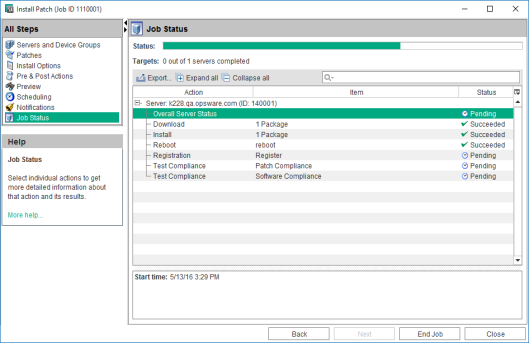Searching the Help
To search for information in the Help, type a word or phrase in the Search box. When you enter a group of words, OR is inferred. You can use Boolean operators to refine your search.
Results returned are case insensitive. However, results ranking takes case into account and assigns higher scores to case matches. Therefore, a search for "cats" followed by a search for "Cats" would return the same number of Help topics, but the order in which the topics are listed would be different.
| Search for | Example | Results |
|---|---|---|
| A single word | cat
|
Topics that contain the word "cat". You will also find its grammatical variations, such as "cats". |
|
A phrase. You can specify that the search results contain a specific phrase. |
"cat food" (quotation marks) |
Topics that contain the literal phrase "cat food" and all its grammatical variations. Without the quotation marks, the query is equivalent to specifying an OR operator, which finds topics with one of the individual words instead of the phrase. |
| Search for | Operator | Example |
|---|---|---|
|
Two or more words in the same topic |
|
|
| Either word in a topic |
|
|
| Topics that do not contain a specific word or phrase |
|
|
| Topics that contain one string and do not contain another | ^ (caret) |
cat ^ mouse
|
| A combination of search types | ( ) parentheses |
|
- Patch management for Unix
- Tracking patches on managed servers
- Support for Unix patch testing and installation standardization
- Viewing patches in the SA Client
- Searching for patches
- Patch management roles for Unix
- Patch management for specific Unix operating systems
- Unix Patch Information
- Using software policies to manage patches
- Patch administration for Unix
- Patch installation
- Patch uninstallation
- Setting uninstall options
Patch installation
The patch installation process consists of two phases:
- Download phase—This is when the patch is downloaded from Server Automation to the managed server. This phase is commonly referred to as staging.
- Installation phase: This is when the patch is installed on the managed server. This phase is commonly referred to as deployment.
You can specify whether you want the installation to occur immediately after the patch is downloaded (staged) or you can schedule it to occur at a later date and time. Patch management also supports the need for best-effort installations of multiple patches by allowing you to specify that the patch installation process will continue even when an error occurs with one of the patches.
SA displays the name of the command that installs the patch. The SA Agent runs this command on the managed server. You can override the default command-line arguments that you want to perform the installation.
To optimally manage HP-UX patch installations, patch management enables you to manage server reboot options and pre- and post-installation scripts, simulate (preview) a patch installation, and set up email notifications to alert you about the status of the installation process. The Install Patch wizard guides you through the setup.

We welcome your comments!
To open the configured email client on this computer, open an email window.
Otherwise, copy the information below to a web mail client, and send this email to hpe_sa_docs@hpe.com.
Help Topic ID:
Product:
Topic Title:
Feedback:





